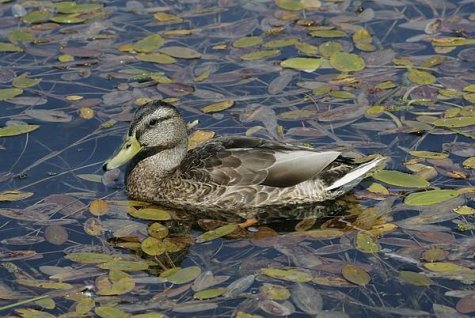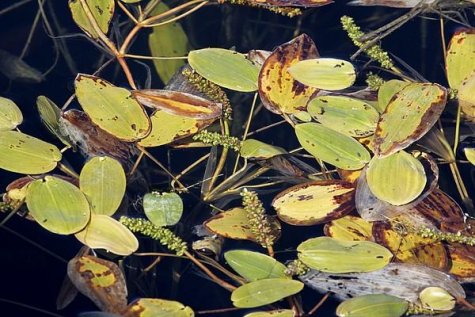Floating pondweed
Photos: Arne Ader
Translation: Liis
Mallard in pondweed thicket
Broad-leaved pondweed Ujuv penikeel Potamogeton natans
The broadleaved pondweed is a very common plant in our waters, a perennial, monoecious (with bisexual flowers, on the same plant) aquatic plant. It is undemanding and occurs in large stands; there are no difficulties in identifying the plant. Quite tolerant with regard to water quality, endures even temporary dry spells.
It is attached to the bottom of the water body with an abundantly branching, creeping rhizome, from which numerous round stems grow that rise to the water surface with the aid of floating leaves. The pondweed has two kinds of leaves – the submerged leaves have a rudimentary leaf blade and are narrow (length more than twenty centimetres but width only a couple of millimetres), the floating leaves are broadly egg-shaped (ovate), in flowing waters they may be lanceolate (lance or canoe-shaped).
Such a thicket promotes the overgrowing of water bodies but at the same time it offers shelter for many aquatic organisms and fish. Waterfowl feed on the seeds of the plant and they are already to be seen.
Weeding out pondweed from a water body does not provide good results – some piece of the rhizome will still remain on the bottom. Eighteen species of pondweed have been listed from Estonian waters but many are extremely similar to each other.
Broad-leaved pondweed
Translator's note: the Estonian name, ujuv penikeel, literally means "floating dog's tongue".










